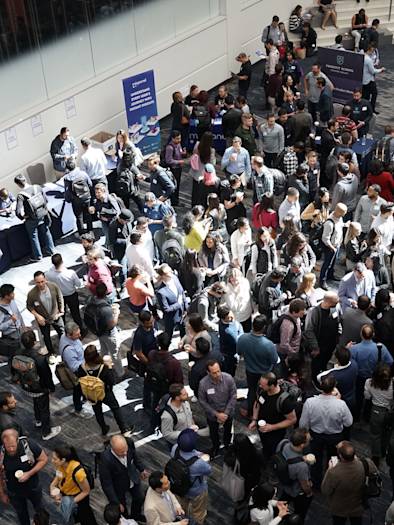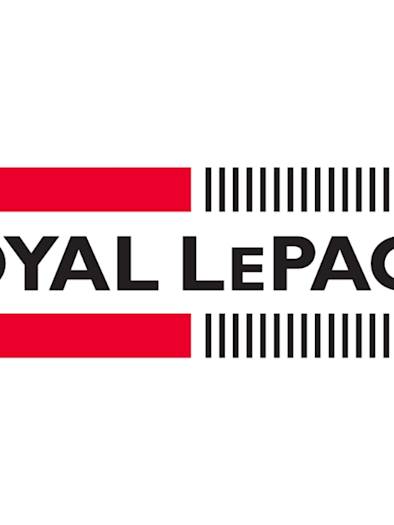
The Two Sessions – What to expect at China’s most important annual political meetings in 2020
After being postponed for over two months due to the pandemic, China’s long-awaited “Two Sessions,” the most important annual gatherings on the domestic political calendar, will finally kick off later this week in Beijing. The National People’s Congress (NPC), the national legislature, and the Chinese People’s Political Consultative Conference (CPPCC), the top political advisory body, will begin on May 22 and May 21, respectively. The greenlight for the meetings to proceed sends a strong signal about the Chinese leadership’s confidence in having successfully overcome the domestic COVID-19 outbreak.
In an incredibly challenging year, the Two Sessions will provide a critical bellwether for taking stock of how Beijing intends to steer the world’s second-largest economy through the rest of 2020. The below piece takes a look at some of the key details and broader themes we’re likely to see at this year’s Two Sessions – from rebooting the Chinese economy to wiping out extreme poverty, revamping public-health legislation to discussing proposals for the 14th Five-Year Plan (2021-2025).
A revised or scrapped target for annual growth
After shrinking by 6.8% in the first quarter, the Chinese economy is continuing to recover from its worst contraction in decades. Reigniting growth and avoiding a prolonged downturn can be expected to top the agenda at the Two Sessions.
Typically, China’s full-year GDP growth target is the big-ticket item unveiled in the government work report. This year, however, it’s possible that the annual target may be scrapped altogether due to the economic uncertainties and the fact that we’re already five months into 2020. If a target is set, it will likely be revised dramatically downwards from the usual 6% – perhaps to 2% or 3%. Alternatively, a flexible growth range could be provided instead of a hard target to give policymakers more room to maneuver in a very difficult year.
Unveiling fresh stimulatory policies
The NPC will likely pass a new package of stimulatory measures to drive growth. In contrast to most other major countries, China has refrained from huge government spending programs to deal with the pandemic’s economic fallout. The government has instead relied upon more moderate steps such as cutting corporate taxes and fees, expanding the supply of business loans, launching consumer coupon campaigns, directing local authorities to issue special-purpose bonds for infrastructure development, and more.
The parameters and implementation of the stimulus remain uncertain. Policymakers probably won’t resort to a massive spending program like they did in response to the 2008 global financial crisis, being wary of adding too much to the accumulated risks in the domestic financial system. But a substantial package is expected now, especially given rising concerns about the darkening outlook for the global economy. Tough months may lie ahead for China’s exporters in particular following a collapse in shipments to their major trading partners, especially Europe and the U.S.
Accelerating “new infrastructure” development
Chinese authorities have increasingly turned to “new infrastructure” as a key part of plans to stimulate the economy. Covering investment across a variety of high-tech fields, such as 5G networks, data centers, and artificial intelligence, new-infrastructure development broadly supports a structural upgrade of the Chinese economy via technology.
In the wake of the pandemic, China is now looking at more targeted infrastructure investments to catalyze more sustainable and innovative growth across many other sectors and help to resuscitate the economy. Further details on China’s new-infrastructure spending plans will most likely emerge at the Two Sessions.
Much faster spending can be expected to unfold in new infrastructure, but conventional infrastructure will still account for the bulk of investment. Goldman Sachs projected that China’s total investment in new infrastructure would reach 2.3 trillion yuan (US$325 billion) by next year, while still only accounting for about one-tenth of total infrastructure spending.
Ensuring employment in the world’s largest workforce
The economic shutdown in the first quarter delivered an unprecedented shock to China’s labor market, with millions of jobs lost. Keeping the unemployment rate under control is a top priority for Beijing – even more so than restoring the growth rate to normality. At a meeting of the State Council last month, Premier Li Keqiang stressed, “No job means no income and no wealth creation. [We need to] make every effort to prevent massive lay-offs.” On May 15, a spokesperson for the National Bureau of Statistics (NBS) acknowledged that, “The pressure on employment is rather large.”
At the Two Sessions, the government will almost certainly unveil new plans to shore up the world’s largest workforce, such as the extension of unemployment benefits and other forms of assistance to those laid off. In particular, this will likely be directed towards supporting some of the most vulnerable groups, including migrant workers, employees at small businesses, and fresh university graduates. Ensuring employment could also be a major factor for further ramping up stimulus measures in the coming months.
Eliminating poverty and building a “moderately prosperous society”
Despite the economic consequences of the pandemic, China has intensified its drive to wipe out extreme poverty by the end of 2020 and complete the building of a “moderately prosperous society,” a longstanding goal set by the Xi administration. By the end of March, central authorities had allocated special poverty alleviation funds worth 139.6 billion yuan (US$19.7 billion) for the rest of the year, a month earlier than in 2019. Last month, President Xi’s visit to an impoverished village in Shaanxi province was described by state news agency Xinhua as sending a clear message that “China is determined to complete the world’s biggest poverty-relief project as scheduled.”
At the Two Sessions, Chinese policymakers will likely provide further details about the roadmap for lifting the last several million people out of poverty in the next seven months. This will likely include a focus on safeguarding employment in rural parts of the country hit hard by the pandemic, especially in Hubei province, as well as leveraging digital technologies like e-commerce platforms to better connect isolated areas with the national economy.
Overhauling public health legislation
Bolstering China’s public healthcare system will be another major theme at the Two Sessions, with a focus on addressing what an NBS spokesperson described as the “shortcomings and deficiencies” exposed during the pandemic. A specific legislative plan is currently in the pipeline which aims to formulate or revise 17 health-related laws, including changes aimed at strengthening the management of medical waste and prohibiting the trade and consumption of wildlife.
Discussing the proposed series of reforms, Shen Chunyao, Director of the NPC Standing Committee’s Legislative Affairs Commission, recently emphasized, “A strong line of defense of laws and regulations will be fortified to protect people’s life and health.” This month, Li Bin, the Deputy Director of the National Health Commission (NHC), told reporters that the NHC would address issues exposed by the COVID-19 outbreak by “centralizing its systems and making better use of big data and artificial intelligence.”
Reassuring international businesses and encouraging continued foreign investment
After foreign direct investment (FDI) into China plunged by 10.8% in the first quarter from a year ago, the Two Sessions will probably see delegates devote attention towards reassuring the international business community about the Chinese market’s long-term attractiveness and potential.
This is especially likely given that recent weeks have seen rising calls in major economic partners from Japan to Europe to the U.S. to repatriate production of key goods, such as medicines and healthcare products, reducing their reliance upon China. What’s more, U.S.-China economic tensions have also quickly reemerged after the temporary lull achieved earlier this year following the inking of the phase-one trade deal, heightening the risk of accelerated decoupling. However, an April survey by the American Chamber of Commerce in Shanghai showed that 70% of respondents were not considering moving their supply chains out of China due to the pandemic. Commenting on the huge challenges involved in doing so, Ker Gibs, the president of the U.S. business organization, said, “Relocating a company from China to the U.S. is not like packing a suitcase and going. It’s a complicated process with a lot of different factors.”
Last month, China’s Ministry of Commerce emphasized that the country had not seen a large-scale exodus of foreign capital despite the pressures imposed on businesses by the pandemic. The official figures also showed that FDI had rebounded in April, growing 11.8% year-on-year. The ministry said China had been introducing a series of policies to support foreign investors and promised to take further steps to create a stronger business environment for their future development. The Two Sessions can be expected to reveal more details about how the government plans to encourage international businesses to continue deepening their China presence rather than scaling it back in response to domestic political pressures.
Gauging China’s future direction-of-travel under the next five-year plan
Every five years, China’s leadership unveils a strategic roadmap for steering the country over the coming half decade. These grand blueprints identify the top political, economic, and social priorities for the next planning horizon. And with 2020 marking the tail end of the current 13th Five-Year Plan (FYP) (2016-2020), Chinese strategists and policymakers are busy pulling together the 14th FYP (2021-2025), the second under the Xi administration. Although the 14th FYP won’t actually be unveiled until the Two Sessions in 2021, this year’s meetings will likely see greater clarity emerge about what key themes and policy proposals are being prioritized for inclusion.
So what should businesses expect? Essentially, they should anticipate consistency with the broad goals spelled out during the Xi administration’s first term in office rather than abrupt shifts in policy. The 14th FYP will reaffirm the strategic priorities laid out in the 13th FYP and define how it intends to build upon them. For the economy, this will focus on shifting the principal growth drivers more towards innovation and consumption while embedding sustainability considerations more deeply into the model for national development.
After the Two Sessions conclude, a myriad of pronouncements can be expected to emerge in the coming months about what shape the 14th FYP will take – from central and provincial authorities to industry bodies and think tanks. The savviest companies will take a forward-looking approach by following these developments closely; mapping out the opportunities and risks that may lie ahead for their businesses from 2021 onwards will be key to their continued success in China.







